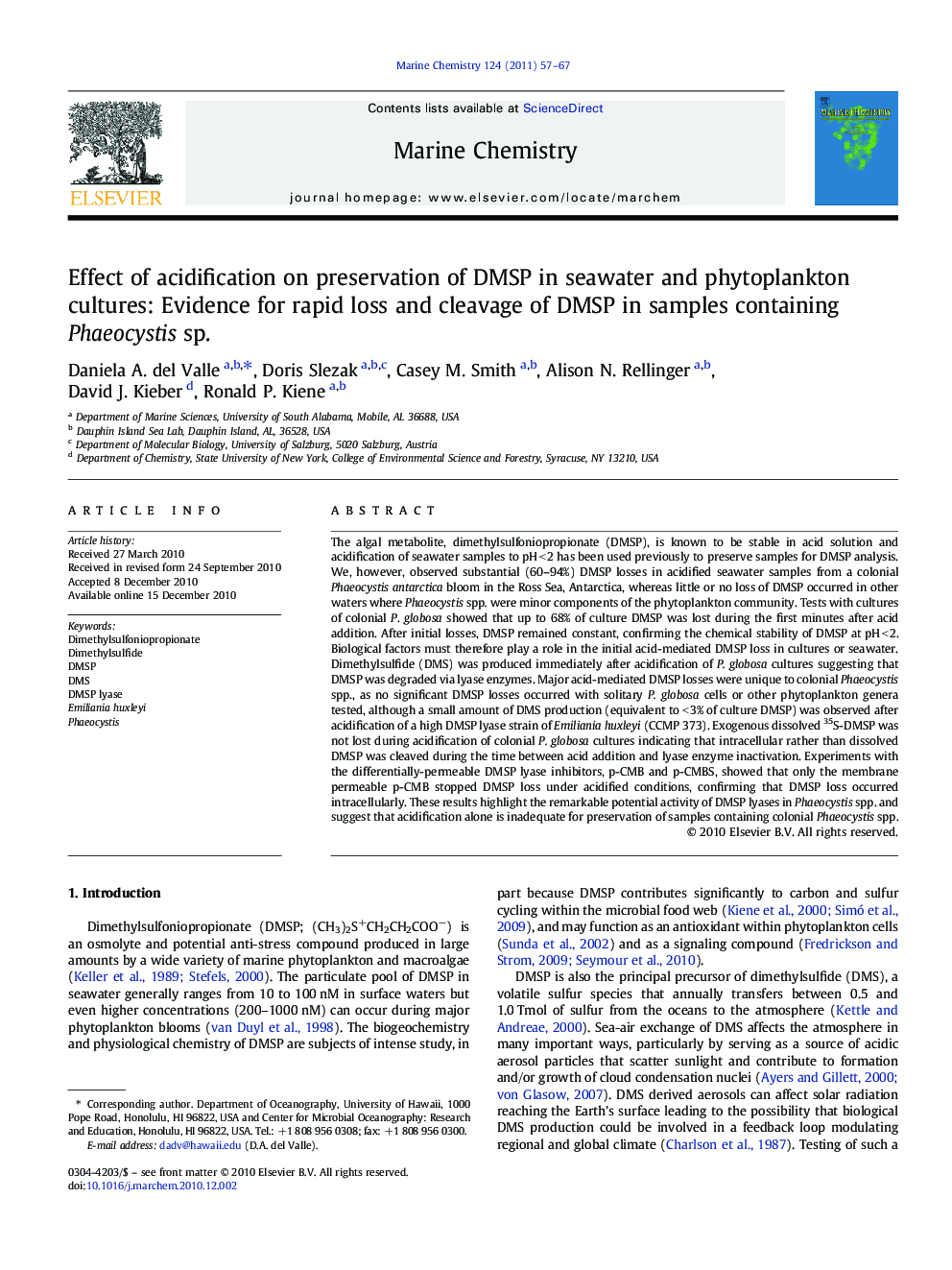| کد مقاله | کد نشریه | سال انتشار | مقاله انگلیسی | نسخه تمام متن |
|---|---|---|---|---|
| 1262099 | 1496700 | 2011 | 11 صفحه PDF | دانلود رایگان |

The algal metabolite, dimethylsulfoniopropionate (DMSP), is known to be stable in acid solution and acidification of seawater samples to pH < 2 has been used previously to preserve samples for DMSP analysis. We, however, observed substantial (60–94%) DMSP losses in acidified seawater samples from a colonial Phaeocystis antarctica bloom in the Ross Sea, Antarctica, whereas little or no loss of DMSP occurred in other waters where Phaeocystis spp. were minor components of the phytoplankton community. Tests with cultures of colonial P. globosa showed that up to 68% of culture DMSP was lost during the first minutes after acid addition. After initial losses, DMSP remained constant, confirming the chemical stability of DMSP at pH < 2. Biological factors must therefore play a role in the initial acid-mediated DMSP loss in cultures or seawater. Dimethylsulfide (DMS) was produced immediately after acidification of P. globosa cultures suggesting that DMSP was degraded via lyase enzymes. Major acid-mediated DMSP losses were unique to colonial Phaeocystis spp., as no significant DMSP losses occurred with solitary P. globosa cells or other phytoplankton genera tested, although a small amount of DMS production (equivalent to < 3% of culture DMSP) was observed after acidification of a high DMSP lyase strain of Emiliania huxleyi (CCMP 373). Exogenous dissolved 35S-DMSP was not lost during acidification of colonial P. globosa cultures indicating that intracellular rather than dissolved DMSP was cleaved during the time between acid addition and lyase enzyme inactivation. Experiments with the differentially-permeable DMSP lyase inhibitors, p-CMB and p-CMBS, showed that only the membrane permeable p-CMB stopped DMSP loss under acidified conditions, confirming that DMSP loss occurred intracellularly. These results highlight the remarkable potential activity of DMSP lyases in Phaeocystis spp. and suggest that acidification alone is inadequate for preservation of samples containing colonial Phaeocystis spp.
Research Highlights
► Acidification is often used to preserve samples for DMSP quantification.
► DMSP in acidified samples containing colonial Phaeocystis was not preserved (≤94% loss).
► Of 14 species tested, only Phaeocystis showed acid–mediated DMSP loss.
► DMS was produced immediately after acidification in colonial Phaeocystis cultures.
► Evidence points to involvement of intracellular DMSP lyases.
Journal: Marine Chemistry - Volume 124, Issues 1–4, 20 March 2011, Pages 57–67